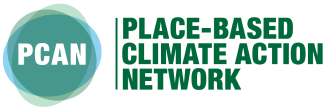Commentary
By Ian Sullivan and Lina Brand Correa
17 May 2022
How often do you seek the participation of those whose lives your decisions affect? When you seek their participation, how meaningful is this process? People only get to vote once every several years and, if they are lucky, they might participate in a consultation. Overall, there are not that many opportunities for the average person to engage with democratic processes – we do not get many chances to “practise” democracy.
It is up to the institutions to decide in what form and how often people get to participate to enable more opportunities for meaningful democratic involvement. If you are one of these institutions, digital democracy tools might be one of the ways forward. You may have already used some, or you may be thinking that they are something you need to use but are confused about how to pick the right one. This Commentary runs through a few key areas to think through to enable you to take advantage of what the latest e-democracy tools offer. Of course, there are many more digital democracy tools out there so do your own research too!
How to pick the right digital democracy tool for you
Once you have made the decision that you want greater participation in decision-making, whether to understand the views of your constituents or to get ideas from the people who your decisions affect, you then need to find the right tool for your needs. There is a whole array of digital democracy tools that can help you to generate new ideas, get feedback on proposals, build consensus around changes, or run participatory budgeting. These tools could play a valuable role in helping organisations and local governments to make transformative changes to communities to meet the challenges of the climate emergency. However, before you jump in, there are lots of things to consider to ensure that you make the right choice for you and for those you want to take part in your project. The technology will not make your engagement a success on its own.
We have produced a table (click the download link at the bottom of the page) to collate some of the features of the tools we have reviewed. Reviewing the tools can be tricky and make your head spin - it’s a bit like watching lots of James Bond films, they all merge into one after a while. And, while sharing many similarities, each does have a slightly different focus, meaning you get a slightly different process and potentially different outcomes depending on the choices you make.
What do you want it for?
It may seem obvious at first - you want to understand people’s views on avenues for lowering carbon, or low-traffic neighbourhoods, etc - but you need to dig deeper than that to get clarity within your team as to the purpose of online participation. For instance, how collaborative are you willing to be? You may want to get views about ideas, strategies and plans that you and your team have generated. If this is the case, a simple polling tool like Polco, Polis or All Our Ideas may suffice.
You can get these for free and pay for any support costs. Polco aims at building consensus based on user input as people vote on ideas generated and then ideas are refined through the process. Polis is about generating conversations between users through them submitting short statements that get sent to others. Polis then groups statements together, showing which are popular so you can understand how your audience is thinking about a topic. All Our Ideas is an easy-to-use wiki survey with open voting.
Alternatively, you may be looking to co-produce ideas to answer broader questions, or even to learn from your communities to generate knowledge and ideas from new perspectives. For this there are tools that allow proposals, consultation, surveys, participatory budgeting and more. Deciding on which of these tools to use is linked to a more fundamental question about how much decision-making power you are prepared to share with those outside of your organisation. For instance, Consul allows you to share legislative text with your community and for your community to propose legislative text.
If people make proposals that are expensive or outside of what you would consider doable, are you prepared to go down paths that were not thought up by your team or experts that you have consulted? Ethelo centres the user in the decision-making, asking how they would allocate and balance a budget, and showing them the cost of their ideas to give them real-time feedback whilst taking part.
Finally, before you begin, think about outcomes and what you will do with the ideas, comments, and thoughts that you have generated through the process. Do you want to create a conversation with your audience, are you prepared to be challenged, change your approaches, and follow through with ideas that are generated?
What are the practical considerations?
Once you are clear on the answers to the above questions, there are a few practicalities to consider. First there is the obvious one: your budget. The online tools that we reviewed range markedly in price. There are the free survey tools mentioned above and we also reviewed Decidim, a free, open-source tool, but they don’t offer support on implementation, so you would have to build capacity within your team or hire an external technician to set up and run it.
Some offer packages per project (costs are correct for 2021). For instance Ethelo is around £11,500 per project, Your Priorities is £2,300 + VAT per month, and Citizens Lab offers a range of packages from “Essential” to “Premium”. The cost varies depending on the size of the location that you represent: a “Standard” package for a locality of under 500,000 people is £17,500 per year and includes a kick-off meeting, strategy workshop, training session, project design workshop and evaluation session.
The next practical question is about the skills you have in your team for managing the platform. Paid-for tools offer various support packages to design and implement your project, ranging from workshops, training, and even reviewing content. Civocracy will give you this type of support from inception to evaluation for around £20,000. Different tools are marketed as "easy to use", meaning very little technical knowledge is required within your team, and anyone familiar with using a Content Management System should be able to run the project day to day. You may feel that you do not want to pay for extra support, but getting the set-up, strategy and implementation right could be key to creating an engaging user experience, and make the difference between high levels of engagement or not.
The final practical question to consider is time. How long have you got before you want to launch the consultation? Secondly (and this links to cost), how long do you want to run the consultation for, and how broad is the consultation? Are you seeking to engage across a range of issues, or is there something specific you want to engage people on?
How to reach target audiences?
Personal experience of a working in digital campaigning has shown that one of the key mistakes made repeatedly was an “if you build it, they will come” mentality. You can design the perfect engagement tool but if you are not clear on who your audience is, or how you will reach them, then you won’t maximise the engagement or get the results that you’re after. Helpfully, most of these tools offer support in this area, both to help you get clarity on the demographics that you want to reach and with advice on how to reach them.
Outcomes
Most of these tools enable you to see real-time results within the tool itself. If you have collected demographic data, then you can generally analyse along these lines. Ethelo allows you to re-weight results from non-representative samples; Citizens Lab offers fine-grain reporting down to location information from the users; and Your Priorities has AI-driven analytics. Within the survey tools, Polco enables you to sort results by various characteristics and Polis allows you to group responders by what they said and how they voted on different ideas.
After all this it is up to you to decide what you will do with the results, how you will continue to engage those that have (and have not) taken part, and whether you want to go through the process again in the future.
Empowering citizens
Ultimately, digital democracy tools have the potential to help decision makers reach a wider range of citizens on a more regular basis, so that you can more closely understand the views of your constituents. But the key questions are the same as for any participatory process – to what extent do you want to encourage participation, and how much power are you willing to hand over to the public? Arguably, the more you climb up the participation ladder (from public relations campaigns on the bottom rungs to greater citizen control on the top rungs), the better a chance of “practising” democracy, for both citizens and organisations.
Ian Sullivan is a post-graduate researcher at the University of Leeds, working on community based climate change mitigation. Lina Brand Correa is Assistant Professor in the Faculty of Environment and Urban Change at York University, Canada, and a PCAN Associate. She studied digital democracy for her PCAN Fellowship project on "The green path to recovery: Towards a participatory and place-based economy". The authors declare they have no conflicts of interest.
Image: Pixabay

